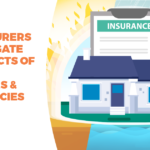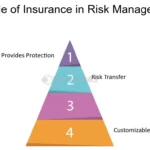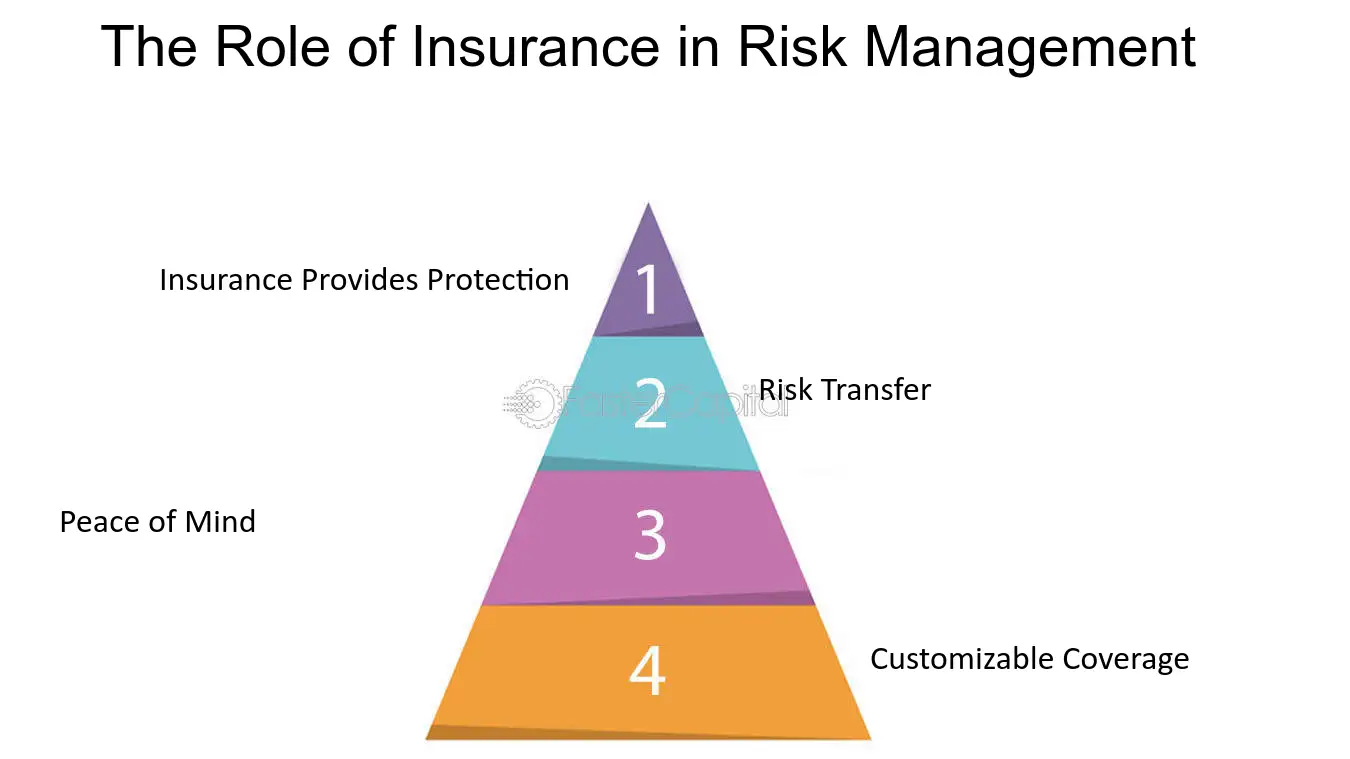Outline:
- Introduction
1.1 The Rising Frequency of Natural Disasters
1.2 The U.S. Insurance Industry’s Response
1.3 A Changing Risk Landscape for Insurers - Understanding the Types of Natural Disasters
2.1 Hurricanes and Tornadoes
2.2 Wildfires
2.3 Floods
2.4 Earthquakes and Other Geological Events - The Financial Burden on the Insurance Industry
3.1 The High Cost of Claims
3.2 Increased Premiums and Deductibles
3.3 Reinsurance and Its Role in Risk Management - Climate Change and Its Influence on Natural Disasters
4.1 The Connection Between Climate Change and Extreme Weather
4.2 Rising Sea Levels and Coastal Risks
4.3 Shifting Patterns of Wildfires and Droughts - Changes in Insurance Coverage Due to Natural Disasters
5.1 Exclusions and Limitations in Coverage
5.2 The Growing Need for Specialized Insurance Products
5.3 Government-Backed Insurance Programs - The Role of Technology in Managing Risk
6.1 Data Analytics and Predictive Models
6.2 Drones and Satellite Technology for Damage Assessment
6.3 How Insurers Use Artificial Intelligence in Claim Processing - The Economic Impact of Natural Disasters on Insurance Companies
7.1 The Strain on Insurance Providers’ Financial Stability
7.2 The Effect of Large-Scale Disasters on the Industry’s Bottom Line
7.3 Long-Term Economic Effects - Regulatory Changes and Industry Response
8.1 State and Federal Regulations Regarding Natural Disasters
8.2 The Need for Policy Adjustments
8.3 Balancing Risk and Accessibility of Insurance - Consumer Behavior and Expectations
9.1 Shifting Consumer Demands for Coverage
9.2 The Growing Importance of Disaster Preparedness
9.3 Consumer Education and Awareness in the Aftermath of Disasters - The Future of the U.S. Insurance Industry in the Face of Natural Disasters
10.1 Resilience and Adaptation to Growing Risks
10.2 Innovations in Insurance Products and Coverage
10.3 The Role of Insurance in Post-Disaster Recovery - Conclusion
11.1 The Need for an Evolving Insurance Strategy
11.2 Ensuring Protection for Communities and Insurers Alike - FAQs
12.1 How do natural disasters affect insurance premiums?
12.2 Why are insurance companies raising deductibles after natural disasters?
12.3 What role does reinsurance play in disaster recovery?
12.4 Can I get insurance coverage for wildfires or floods in high-risk areas?
12.5 How does climate change impact the insurance industry?
The Impact of Natural Disasters on the U.S. Insurance Industry
Natural disasters have always posed a significant challenge to the insurance industry. From hurricanes and wildfires to floods and earthquakes, the financial consequences of these events are felt by insurers and policyholders alike. As climate change continues to intensify weather patterns and disaster frequency, the pressure on the U.S. insurance industry to manage risk has reached new heights. This article examines the profound impact of natural disasters on the insurance landscape, exploring how insurers are adapting to increasing challenges, evolving consumer needs, and regulatory pressures.
The Rising Frequency of Natural Disasters
Natural disasters are becoming more frequent and severe. According to the National Oceanic and Atmospheric Administration (NOAA), the U.S. has experienced a significant increase in the number of weather-related events over the past few decades. This rise in frequency is compounded by the economic costs associated with these events, making them more impactful on both insurers and policyholders.
The U.S. Insurance Industry’s Response
The insurance industry has long been an essential part of the economic framework, providing financial protection against various risks, including natural disasters. However, with the increasing number and severity of these disasters, insurers are being forced to reassess their strategies and coverage options. This has led to changes in premium pricing, policy offerings, and claims handling procedures, which are designed to mitigate the financial strain on both insurance companies and their customers.
A Changing Risk Landscape for Insurers
Insurers are facing an evolving risk landscape where climate change and extreme weather events are shifting traditional patterns of risk. In the past, underwriting for natural disasters often involved assessing historical patterns and regional vulnerabilities. Today, however, the unpredictability of climate-related events forces insurers to incorporate new variables into their risk models. This shift is influencing everything from insurance premiums to the availability of coverage in high-risk areas.
Understanding the Types of Natural Disasters
Hurricanes and Tornadoes
Hurricanes and tornadoes are among the most destructive natural disasters, causing extensive damage to property, infrastructure, and lives. These events trigger large-scale claims for insurers, as homes, businesses, and vehicles are often destroyed or severely damaged. With hurricane season growing more intense, insurance companies must constantly evaluate their exposure to such risks.
Wildfires
Wildfires have become a growing concern, particularly in the western U.S. States like California, Oregon, and Colorado have seen massive increases in the number and intensity of wildfires. The rising frequency of these fires is partially attributed to climate change, and insurers are struggling to keep up with the mounting claims as they are forced to cover the destruction of entire neighborhoods.
Floods
Floods, often a secondary effect of hurricanes or heavy rainfall, present unique challenges for insurers. Unlike damage from fires or tornadoes, flooding is not universally covered by standard home insurance policies. This has led to the development of specialized flood insurance programs, but these policies are often more expensive and less accessible in high-risk areas.
Earthquakes and Other Geological Events
While not as frequent as weather-related disasters, earthquakes and geological events like landslides also impact certain regions of the U.S. For example, California and Alaska are particularly vulnerable to seismic activity. The economic toll of an earthquake can be devastating, and insurers often rely on reinsurance to help manage the risk.
The Financial Burden on the Insurance Industry
The High Cost of Claims
When natural disasters strike, the financial consequences for insurers can be immense. Insurers are responsible for paying out claims to homeowners, businesses, and other affected parties, which can amount to billions of dollars in damage. The large scale of these claims puts significant strain on the industry’s financial stability.
Increased Premiums and Deductibles
To manage the increased risk exposure, insurers often raise premiums in disaster-prone areas. As natural disasters become more frequent and severe, the cost of insuring high-risk properties rises. Homeowners and businesses may face significantly higher premiums and deductibles, which can make insurance unaffordable for some individuals and communities.
Reinsurance and Its Role in Risk Management
Reinsurance is a critical tool for insurance companies to manage risk exposure. By purchasing reinsurance, insurers can protect themselves from the financial strain of large-scale natural disasters. Reinsurance companies, in turn, help spread the risk across a broader global network, allowing insurers to stay financially viable after major events.
Climate Change and Its Influence on Natural Disasters

The link between climate change and the increasing frequency and intensity of natural disasters is well-established by scientists. Rising global temperatures are contributing to more intense storms, wildfires, and flooding. For insurers, this means that risk models must account for the heightened unpredictability of these events.
Rising Sea Levels and Coastal Risks
As sea levels rise due to global warming, coastal areas become increasingly vulnerable to flooding, storm surges, and erosion. This presents a significant challenge for insurers, particularly in areas like Florida, Texas, and Louisiana, where hurricane damage is frequent. Insurers are being forced to adjust their coverage options and pricing to reflect the growing risks in these regions.
Shifting Patterns of Wildfires and Droughts
Wildfires are becoming more widespread and severe, largely due to hotter and drier conditions. The expansion of fire-prone areas increases the risk for homeowners and businesses, which leads to higher premiums. Similarly, areas that experience prolonged droughts may face greater risks of wildfires, making these areas more challenging for insurers to cover.
Changes in Insurance Coverage Due to Natural Disasters
Exclusions and Limitations in Coverage
In response to the rising risks posed by natural disasters, insurance companies have started to limit or exclude certain types of coverage in high-risk areas. For instance, flood insurance may not be included in standard homeowner policies, and certain regions may be deemed uninsurable altogether.
The Growing Need for Specialized Insurance Products
As the insurance landscape evolves, specialized insurance products like flood, wildfire, and earthquake insurance have gained prominence. These products cater specifically to the unique risks posed by certain natural disasters and provide more comprehensive coverage in affected areas.
Government-Backed Insurance Programs
In some instances, the federal government has stepped in to offer insurance coverage for high-risk areas, particularly with flood insurance. Programs like the National Flood Insurance Program (NFIP) help ensure that people living in flood-prone regions can still obtain insurance, even if private insurers are unwilling to cover them.
The Role of Technology in Managing Risk
Data Analytics and Predictive Models
Insurers are increasingly relying on data analytics and predictive modeling to assess the risks posed by natural disasters. By analyzing historical data and considering climate change projections, insurers can better predict where and when disasters may occur, allowing them to price policies more accurately.
Drones and Satellite Technology for Damage Assessment
After a natural disaster, insurers use drones and satellite technology to quickly assess the damage and begin the claims process. These technologies allow for faster and more accurate assessments, improving efficiency and reducing the overall cost of claims.
How Insurers Use Artificial Intelligence in Claim Processing
Artificial intelligence (AI) is transforming the insurance industry, particularly in claims processing. AI tools can quickly analyze claims data, identify patterns, and automate much of the decision-making process. This not only reduces costs but also speeds up the process for policyholders, improving customer satisfaction.
The Economic Impact of Natural Disasters on Insurance Companies
The Strain on Insurance Providers’ Financial Stability
The financial strain on insurance companies after a major disaster can be significant. If a disaster results in a large number of claims, it may take years for insurers to recover. Reinsurance plays a crucial role in helping insurers manage this strain and protect their long-term viability.
The Effect of Large-Scale Disasters on the Industry’s Bottom Line

Large-scale natural disasters can impact the insurance industry’s bottom line for years. In addition to paying out claims, insurers must also contend with increased regulatory scrutiny, changing customer expectations, and the need to maintain adequate reserves to cover future claims.
Long-Term Economic Effects
Beyond the immediate financial impact, natural disasters have long-term economic effects on the regions they affect. These disasters can disrupt local economies, slow down recovery, and increase insurance costs for residents and businesses alike.
Regulatory Changes and Industry Response
State and Federal Regulations Regarding Natural Disasters
In response to the growing risk of natural disasters, both state and federal governments have implemented regulations designed to protect policyholders and insurers alike. These regulations aim to ensure that insurers maintain adequate reserves while also protecting consumers from exorbitant premium hikes.
The Need for Policy Adjustments
Insurance companies must constantly adjust their policies to reflect changing risks. This may involve modifying coverage options, adjusting premiums, or working with policymakers to ensure that insurance remains accessible and affordable for all Americans.
Balancing Risk and Accessibility of Insurance
One of the biggest challenges for the insurance industry is balancing the need to mitigate risk while maintaining accessibility for consumers. If premiums become too high or coverage becomes too limited, insurers risk alienating large segments of the population, particularly in high-risk areas.
The Future of the U.S. Insurance Industry in the Face of Natural Disasters
Resilience and Adaptation to Growing Risks
As the frequency and severity of natural disasters continue to increase, the insurance industry will need to become more resilient and adaptive. This will involve embracing new technologies, adjusting underwriting practices, and working more closely with government agencies to address these growing risks.
Innovations in Insurance Products and Coverage
The insurance industry is already innovating with new products and coverage options to address the unique risks posed by natural disasters. In the future, we can expect to see even more tailored and specialized products, such as catastrophe bonds and weather derivatives, designed to help insurers manage extreme risks.
The Role of Insurance in Post-Disaster Recovery
Beyond covering the financial losses caused by natural disasters, insurers will play a critical role in post-disaster recovery. By quickly processing claims, offering emergency assistance, and helping communities rebuild, insurance companies will be essential in supporting long-term recovery efforts.
Conclusion
Natural disasters have a profound and lasting impact on the U.S. insurance industry. From rising premiums and shifting risk models to the economic consequences of large-scale events, the industry must constantly adapt to a changing environment. While the challenges are significant, the insurance industry’s ability to innovate and adapt to the growing risks posed by natural disasters will play a critical role in ensuring long-term resilience and financial stability for both insurers and policyholders.
FAQs
How do natural disasters affect insurance premiums?
Natural disasters increase the risk for insurers, prompting them to raise premiums, particularly in high-risk areas. This helps insurers cover potential claims and ensures that they remain financially viable.
Why are insurance companies raising deductibles after natural disasters?
To manage the increased risk of claims after a disaster, insurance companies may raise deductibles as a way to share the cost of claims with policyholders while also maintaining their financial stability.
What role does reinsurance play in disaster recovery?
Reinsurance helps insurance companies manage risk by spreading it across a broader pool of insurers. This allows insurers to pay out claims after natural disasters without jeopardizing their long-term financial health.
Can I get insurance coverage for wildfires or floods in high-risk areas?
While some insurers may not offer coverage in high-risk areas, specialized insurance products, such as flood or wildfire insurance, are available to cover these specific risks.
How does climate change impact the insurance industry?
Climate change increases the frequency and intensity of natural disasters, creating more uncertainty for insurers. This leads to higher premiums, specialized coverage options, and the need for more advanced risk management strategies.








